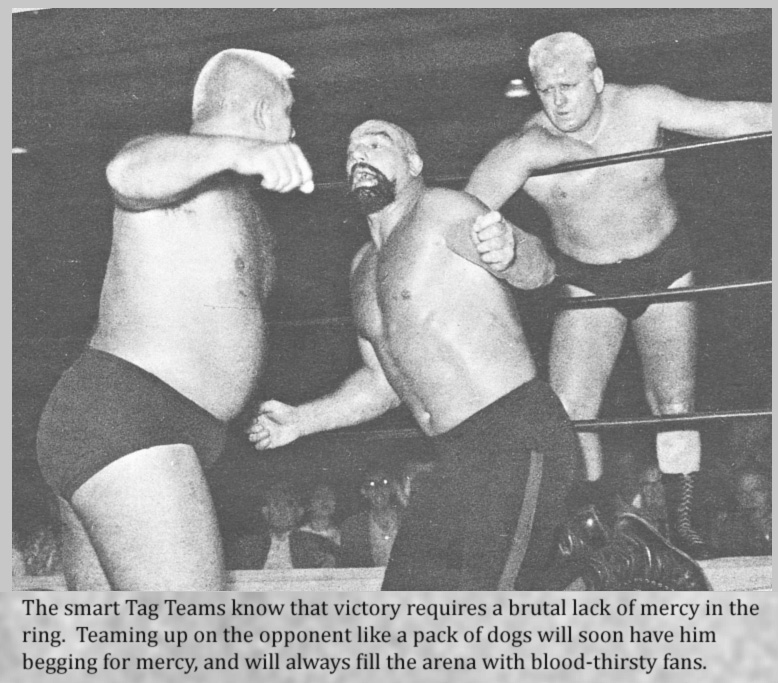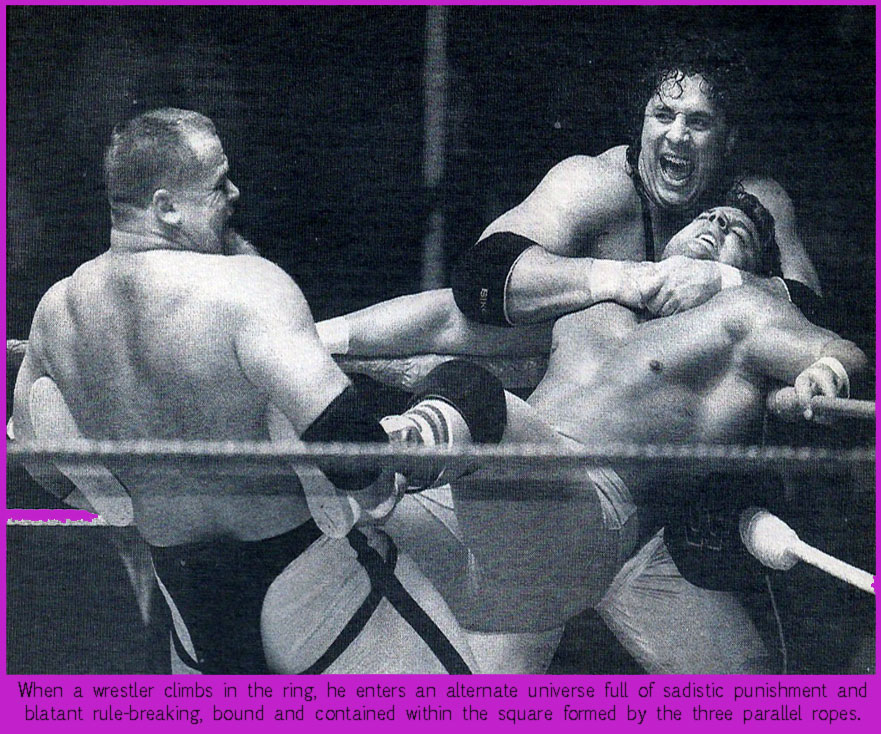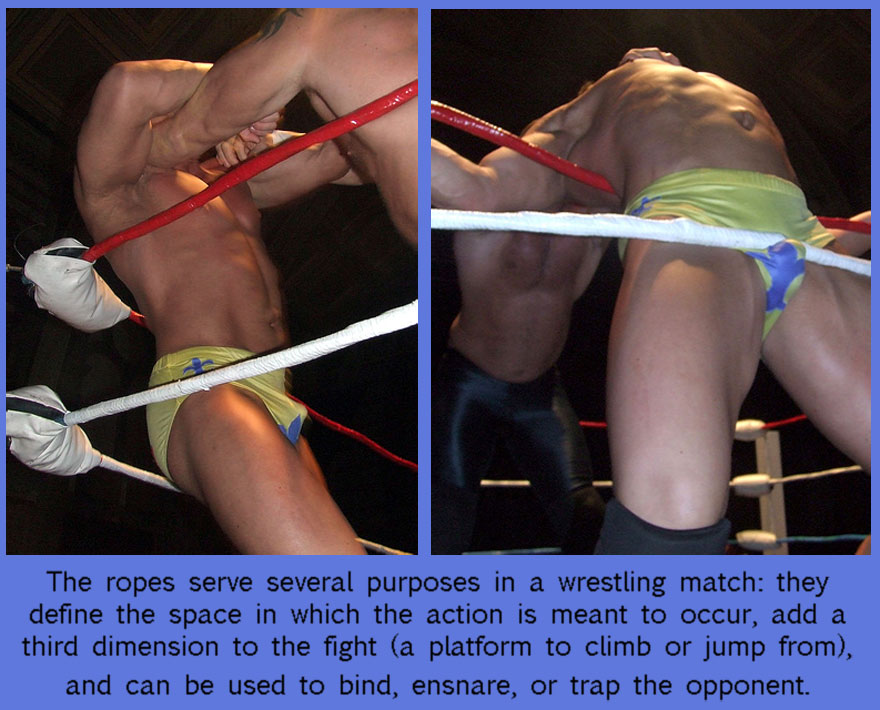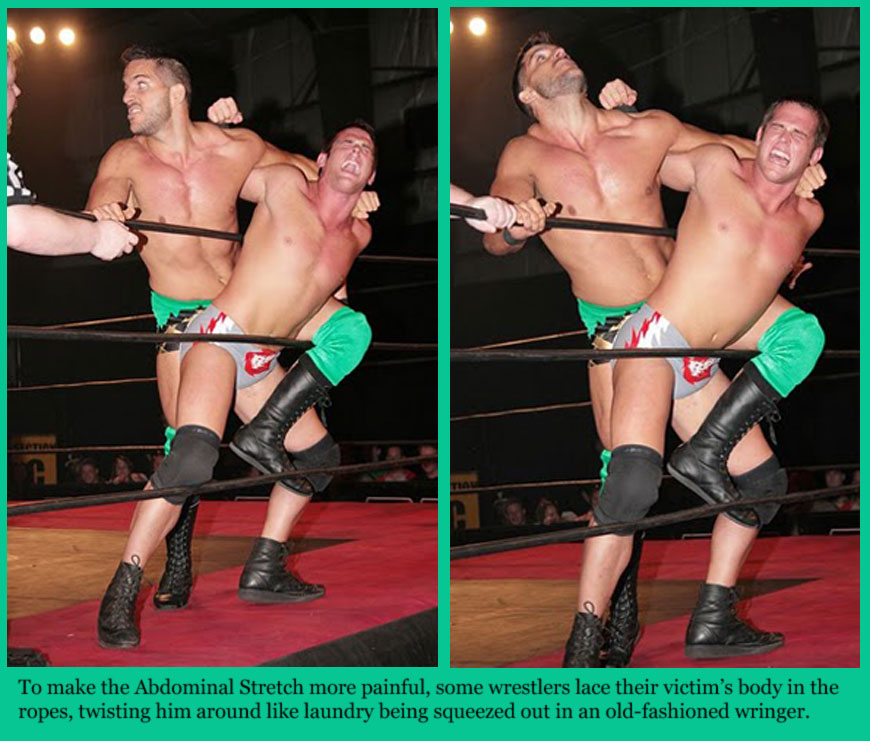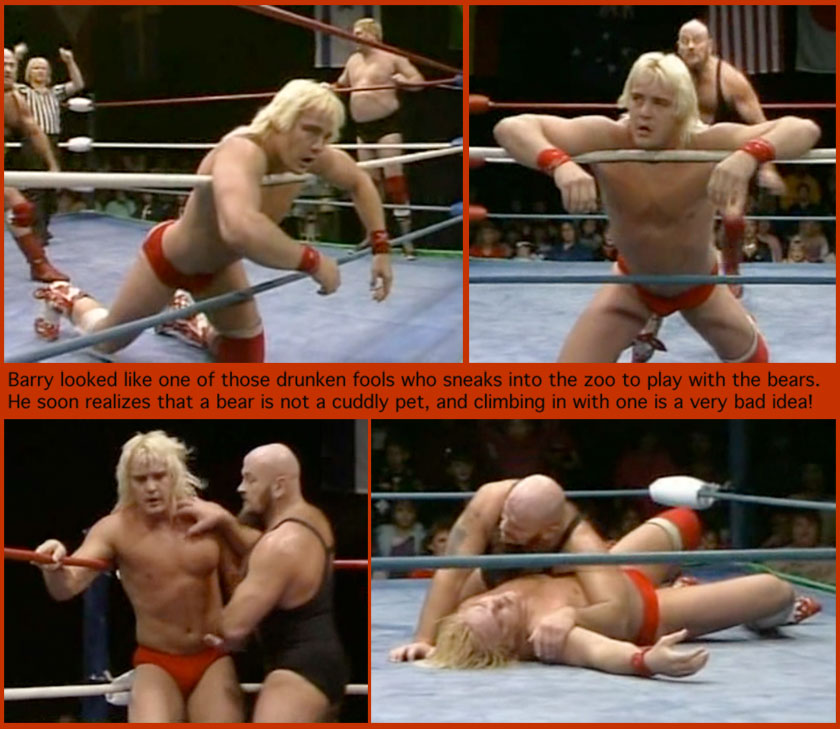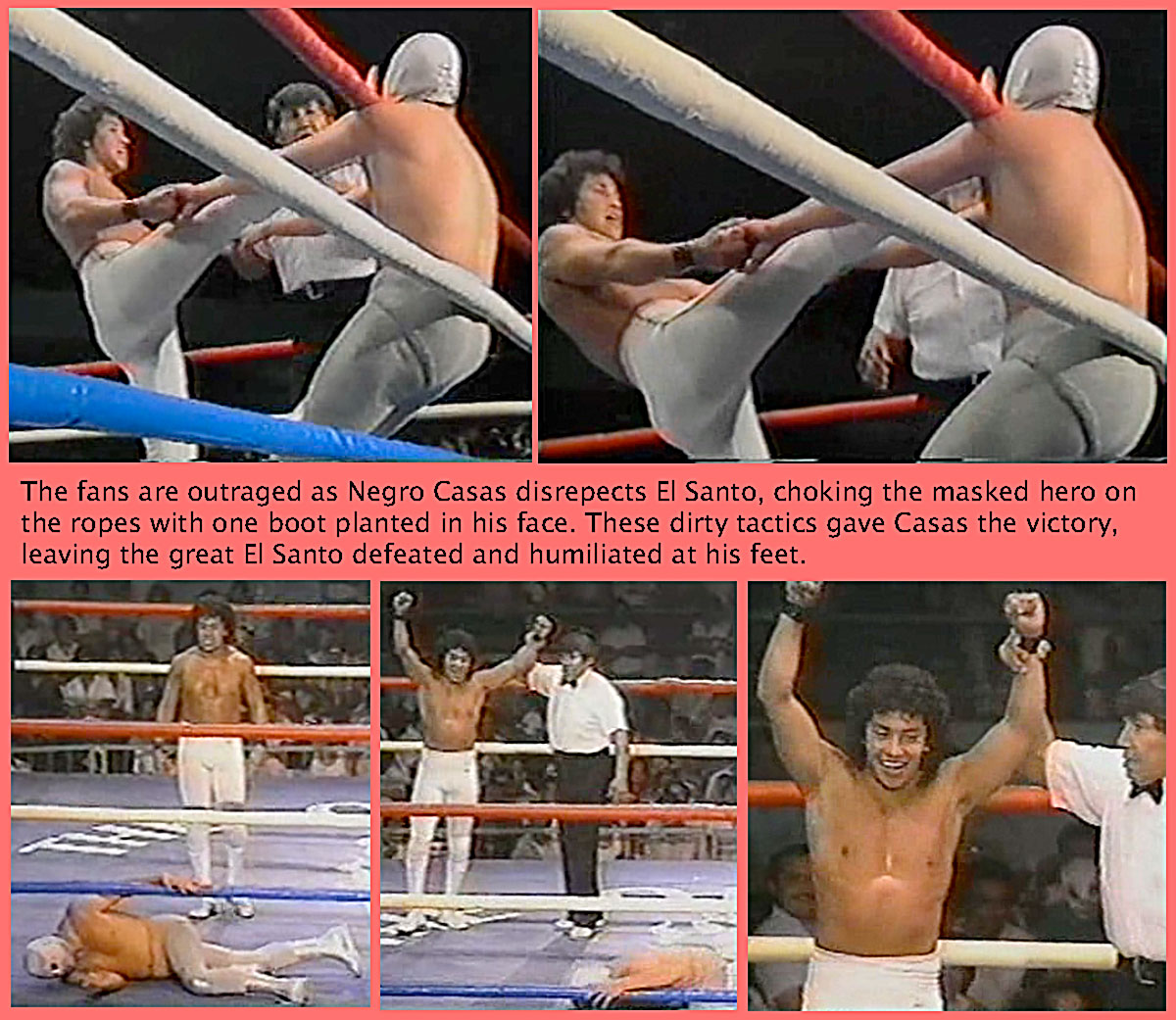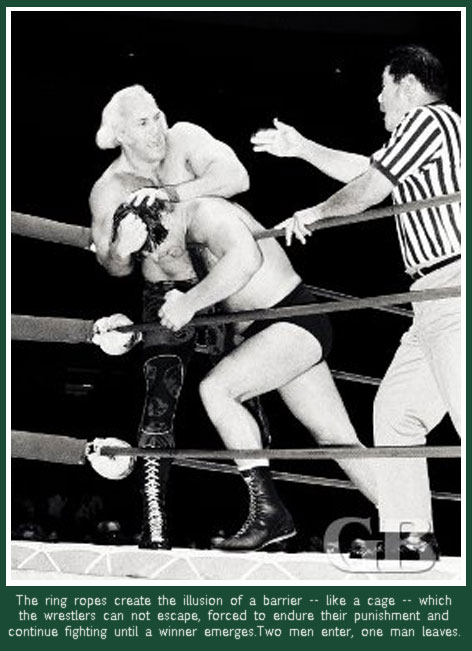 It seems like a lot of trouble to set up the ring before every wrestling show, with the heavy posts to be assembled, turnbuckles to tighten, and the three stretched-tight ropes surrounding the ring. Why do they go to this trouble? What do the ropes add to the experience as opposed to simply wrestling in a circle like amateur grappling, or inside a net or fence, or on a stage?
It seems like a lot of trouble to set up the ring before every wrestling show, with the heavy posts to be assembled, turnbuckles to tighten, and the three stretched-tight ropes surrounding the ring. Why do they go to this trouble? What do the ropes add to the experience as opposed to simply wrestling in a circle like amateur grappling, or inside a net or fence, or on a stage?
The ring ropes create a neat divider — a separation between the crazy violent world of wrestling contained inside the ropes and normal society outside. Inside the ropes, the laws of physics, compassion for others, and the limits of human suffering are routinely violated in contrast to our more ordered, rational, and safer society outside the ropes. The ropes draw a clear border between real world and beautiful fantasy, similar to a picture frame around a work of art.
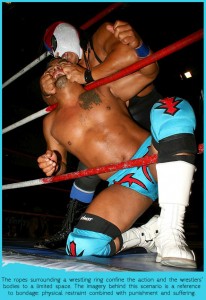 The ring ropes also add excitement for many viewers because they play off the theme of bondage. Just as ropes may be used to restrain and tie up someone you want to dominate, so too are ring ropes used to restrict the motions and physical space of pro wrestlers. As a young, imaginative wrestling fan, I often pictured the weaker wrestler — the jobber — being unable to escape his painful fate because the ropes held him in. It appeared he was locked inside a cage with the stronger opponent (i.e., the ropes represent the sides of the cage), forced to fight like a Gladiator in the Colosseum. If tossed into those stretchy, elastic ropes, he’d bounce right back against his will, often meeting a painful elbow or boot to the stomach for his trouble. Even if he was thrown from the ring, he was compelled (by some unexplained force, perhaps a craving for pain) to crawl back inside the ropes for more punishment. It seemed the ring was the sadistic wrestler’s personal torture chamber and the baby-face was trapped inside.
The ring ropes also add excitement for many viewers because they play off the theme of bondage. Just as ropes may be used to restrain and tie up someone you want to dominate, so too are ring ropes used to restrict the motions and physical space of pro wrestlers. As a young, imaginative wrestling fan, I often pictured the weaker wrestler — the jobber — being unable to escape his painful fate because the ropes held him in. It appeared he was locked inside a cage with the stronger opponent (i.e., the ropes represent the sides of the cage), forced to fight like a Gladiator in the Colosseum. If tossed into those stretchy, elastic ropes, he’d bounce right back against his will, often meeting a painful elbow or boot to the stomach for his trouble. Even if he was thrown from the ring, he was compelled (by some unexplained force, perhaps a craving for pain) to crawl back inside the ropes for more punishment. It seemed the ring was the sadistic wrestler’s personal torture chamber and the baby-face was trapped inside. 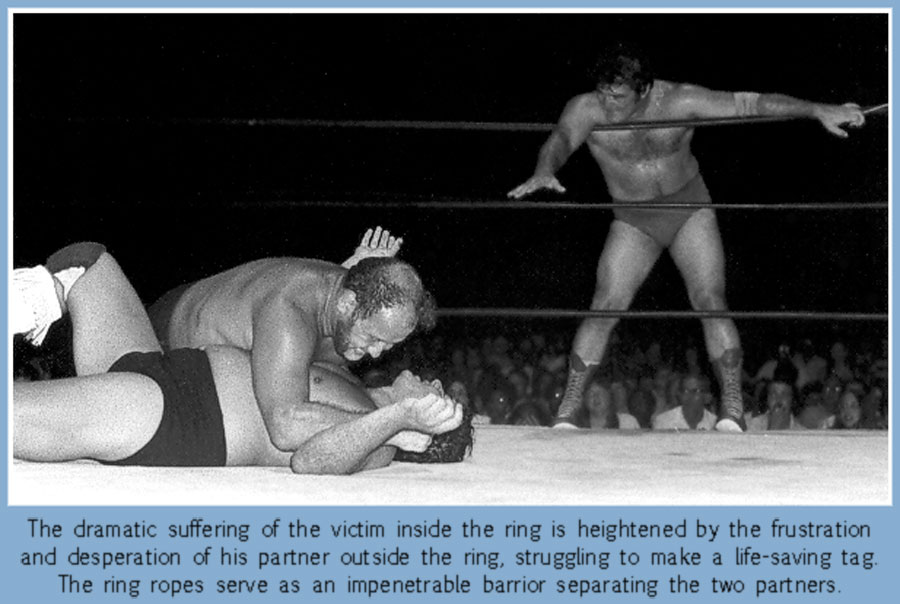
 In tag team wrestling, the ropes separate the Babyface-in-Peril from his eager partner, who is not permitted to step between the ropes and rescue his buddy unless properly tagged. Seeing the victim forever reaching to tag out (but always a few inches too far away) creates a tension in the minds of the fans, like the Lone Ranger slowly sinking in quicksand, hoping that Tonto or Silver or somebody will pull him out ASAP. The irony is that the same exact ring ropes serving as an unbreakable barrier for the good team are an open door for the villain team, who may pass in and out through the rope Force Field as frequently as they wish as long as the ref’s back is turned (which it always is.) This creates even more tension, heat, and outrage for the fans because it is so unfair for one team to ignore the separation of the ropes and the other to be constrained by them. This extra little kink provided by the ropes, I’m sure, drew many viewers to tune in to wrestling on a Saturday afternoon each week.
In tag team wrestling, the ropes separate the Babyface-in-Peril from his eager partner, who is not permitted to step between the ropes and rescue his buddy unless properly tagged. Seeing the victim forever reaching to tag out (but always a few inches too far away) creates a tension in the minds of the fans, like the Lone Ranger slowly sinking in quicksand, hoping that Tonto or Silver or somebody will pull him out ASAP. The irony is that the same exact ring ropes serving as an unbreakable barrier for the good team are an open door for the villain team, who may pass in and out through the rope Force Field as frequently as they wish as long as the ref’s back is turned (which it always is.) This creates even more tension, heat, and outrage for the fans because it is so unfair for one team to ignore the separation of the ropes and the other to be constrained by them. This extra little kink provided by the ropes, I’m sure, drew many viewers to tune in to wrestling on a Saturday afternoon each week.

